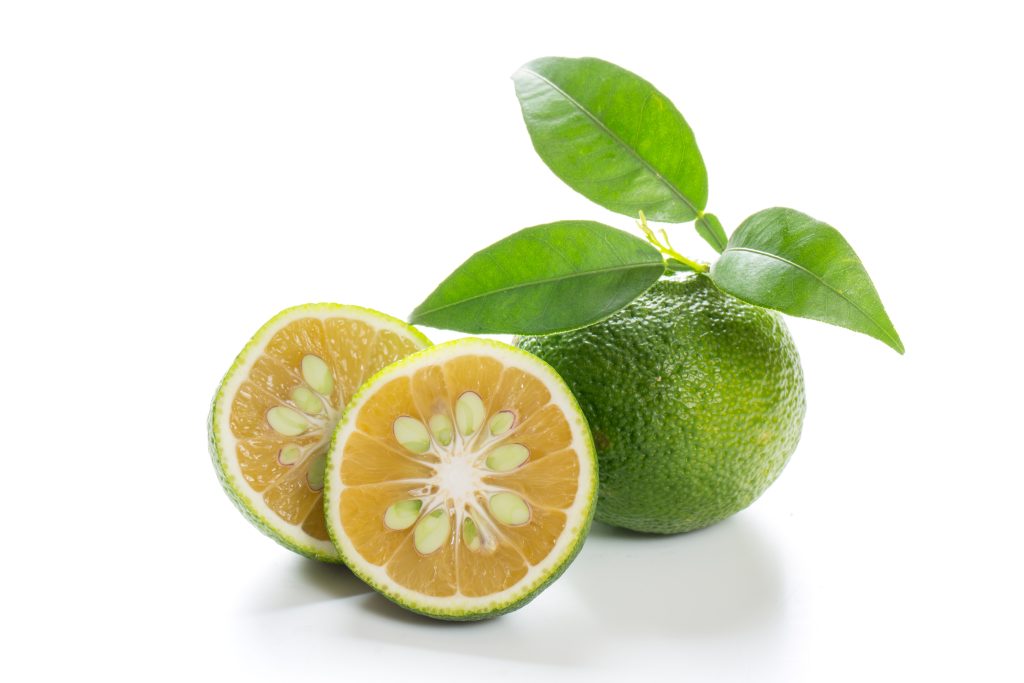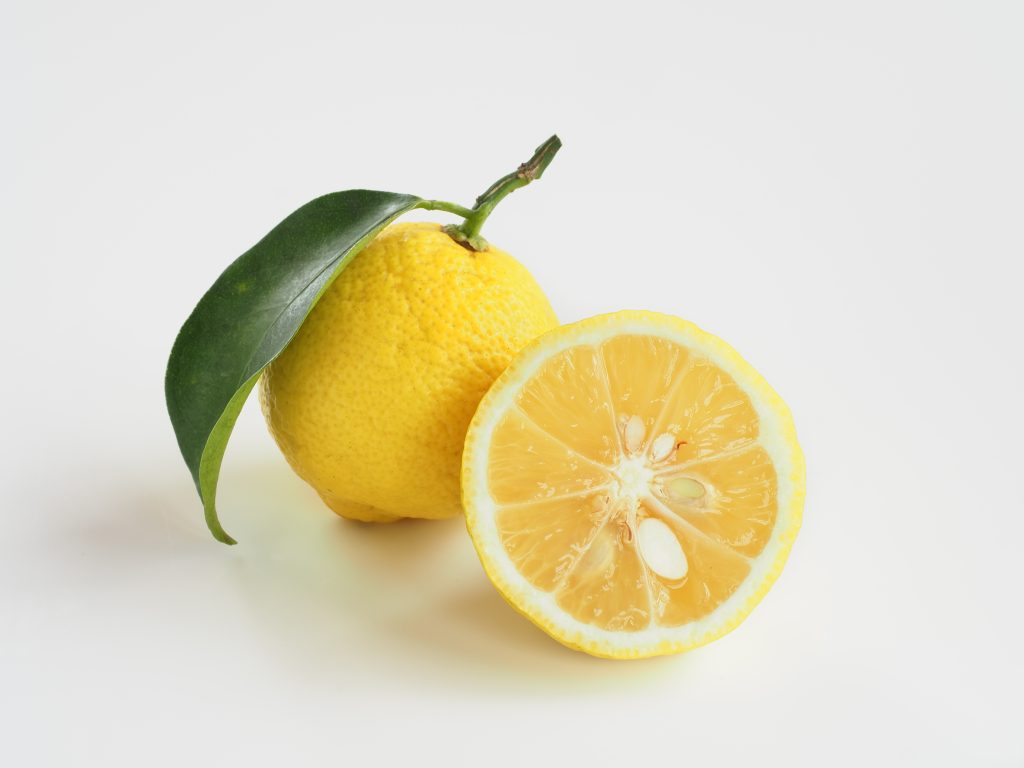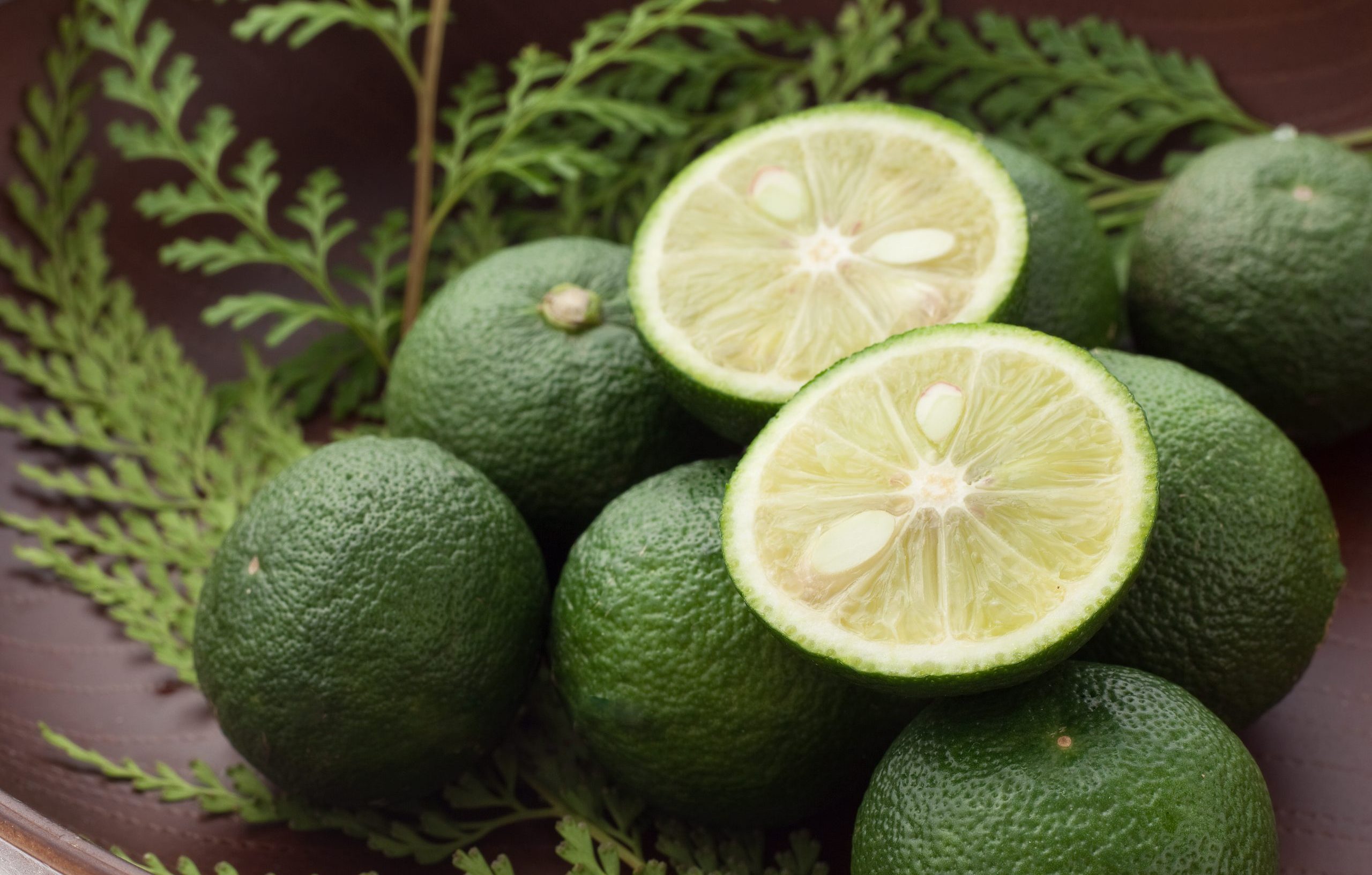Sudachi is a small, aromatic citrus fruit originating from Japan. It's about the size of a golf ball and has a tart and refreshing flavor with notes of lime and lemon. Sudachi is used in various Japanese dishes and is famous for its unique flavor and versatility in cooking.
Table of Contents
What is Sudachi?
Sudachi (pronounced “soo-dah-chee”) is a small Japanese citrus fruit. It belongs to the same family as yuzu and kabosu, and is a popular ingredient in Japanese cuisine.
Sudachi is about the size of a ping-pong ball and has green-yellowish skin that is thin and bumpy. The fruit’s flesh is also green and divided into several segments. The juice of sudachi is tart and acidic, with a bright, citrusy flavor similar to a combination of lime and lemon.
In Japanese cuisine, sudachi is often used as a garnish or seasoning and is commonly paired with seafood, ramen soups, soba and udon noodles, alcoholic beverages, and salad dressings.
Sudachi is typically harvested in the late summer and early fall, and is primarily grown in the Tokushima and Kochi prefectures in Japan. In recent years, it has also been cultivated in other parts of the world, including the United States and South America.
The History of Sudachi
The Sudachi citrus was originally grown in Tokushima Prefecture on Japan’s Shikoku Island. Even now, 98% of the citrus sold in Japanese markets is produced in Tokushima. Rumor has it was accidentally discovered when two citrus fruits, Yuzu and another unknown citrus (possibly Tachibana or Koji), mixed and created a new type of citrus.
Sudachi was initially rare and only available to wealthy people and high-end restaurants in Tokushima. Over time, it became more widely available throughout Japan and is now a popular flavoring ingredient for chefs worldwide.
Sudachi is considered a luxury fruit outside of Tokushima and is often sold at high prices in Japan. It was introduced to American growers in 1963 by a botanist from California who visited Japan to learn about Japanese citrus varieties.
More recently, a unique variety of sudachi has become more widely grown in California, and it can be found through select specialty growers and distributors.

What Does a Sudachi Taste Like?
When eaten raw, Sudachi has a tart and acidic citrus flavor with a slightly bitter aftertaste. The juice and zest of Sudachi are used as a seasoning or garnish in dishes such as sushi, sashimi, and salads.
Sudachi’s flavor becomes more subdued and less tart when cooked but retains its citrusy taste. It is commonly used in sauces, marinades, and dressings to add a tangy flavor to dishes. Sudachi is also used in desserts, such as sorbet and ice cream, to add a bright and refreshing taste.
How to Tell When Sudachi is Ripe
Determining the ripeness of sudachi is straightforward and involves observing these three key characteristics:
| Color | When harvested, a sudachi’s color will be green but will turn a deep yellow hue when fully ripe. Look for the deep yellow color when hunting for ripe sudachi, though green ones will eventually ripen when given time. |
| Fragrance | A ripe sudachi will have a solid and sweet citrus fragrance. You can take a whiff of the fruit to determine its ripeness. If the scent is strong, it is likely ripe. |
| Texture | The fruit should be firm, not hard or overly soft. If it feels mushy, it is overripe. If it is too hard, it is not yet ripe. |
Are Sudachi and Yuzu Related?


Sudachi and yuzu are related, as sudachi is believed to be a hybrid of yuzu and another citrus fruit.
Regarding similarities, sudachi and yuzu are small, round, green citrus fruits commonly used in Japanese cuisine for their unique tart and sour flavor. They are both excellent in sauces, marinades, and dressings, often adding a citrusy flavor to seafood dishes.
In terms of differences, sudachi is generally smaller and has thinner skin than yuzu and is primarily grown and used in Japan. On the other hand, Yuzu is larger, has thicker, bumpy skin, and is more widely grown and used in East Asian cuisine, particularly in Japan and Korea.
When comparing sudachi to lemons and limes, sudachi has a much milder and less acidic taste. It also has a slightly sweeter flavor profile with a hint of bitterness. Lemons, by contrast, are more acidic and have a more pungent, tart taste, while limes have a sharper, sour taste.
Can I Eat Raw Sudachi?
Yes, you can eat raw sudachi. However, most people prefer to drizzle its juice over savory dishes.
The zest and juice of the sudachi fruit are commonly used in Japanese cuisine as a condiment, seasoning, or flavoring agent. However, like lemon or lime, it’s important to note that the fruit is quite sour and acidic, so it may not be very palatable on its own.
Cooking with Sudachi
Here are the steps to prepare sudachi for cooking:
- Zesting/Removing the Rind: Use a zester or a grater to remove the outer layer of the fruit. The rind contains essential oils that give sudachi its unique flavor. Make sure only to remove the thin green layer, not the white pith, which can be bitter.
- Getting Rid of the Seeds: Cut the fruit in half and remove the seeds in the middle using a small spoon or a knife.
- Juicing: Squeeze the juice from the fruit using a citrus juicer or by hand.
Sudachi is a popular ingredient in Japanese cuisine, particularly in the Kansai region. It is often used to flavor sushi, sashimi, and other seafood dishes. It is also commonly used in ponzu sauce, a tangy and citrusy sauce used as a dipping sauce or a marinade for meats and vegetables.

Here are some specific dishes that feature sudachi:
Cold Somen Noodles with Sudachi Lime: A refreshing summer noodle dish perfect for lunch or dinner. The tangy lime dressing will wake your taste buds and make you want to jump into the ocean. Or at least go for a swim.
Soft and Chewy Sudachi Cookies: These cookies are super easy to make and add a slight lemon punch to the mix! They’re perfect for taking along on picnics, hikes, or just as a snack before bedtime.
Sudachi-Infused Liquor: Liquor infused with sudachi makes an excellent gift or party favor—and it’s easy to make! You can even infuse other fruits into your alcohol (like strawberries or raspberries) for different flavors that will pair well with sudachi.
Crème Fraîche Chicken Wings: These crispy chicken wings are a little bit sweet, a little bit sour, and totally satisfying! The sudachi cools down the richness of the crème fraîche, complementing the chicken perfectly.
How to Store Sudachi
Sudachi can be stored in different ways to prolong its freshness:
- You can leave them on the countertop for about a week to fully ripen.
- Storing sudachi in an airtight container inside your fridge’s crisper drawer can preserve their freshness for up to two weeks.
Nutritional Benefits of Sudachi
The Sudachi citrus fruit is jam-packed with various essential nutrients beneficial for the human body, such as antioxidants that protect cells from damage caused by free radicals.
It’s a good source of vitamin C, which helps to boost the immune system, and vitamin A, which keeps organs functioning properly. It also has a healthy amount of fiber, which promotes digestive health,
In addition to these vital nutrients, Sudachi citrus also contains vitamin E, which has anti-inflammatory properties. It also contains calcium and potassium, which helps to promote bone health and regulate fluid levels in the body.
In Japan, Sudachi citrus is even used in natural medicines because it prevents blood sugar spikes and fatigue and reduces inflammation.
Where to Purchase Sudachi
If you live in an area with a large Japanese population, you may be able to find Sudachi at a local Japanese supermarket or other local Asian markets. You can find sudachi in several online retailers specializing in Japanese ingredients and groceries year-round.
Sudachi can be tricky to find outside of Japan and may be more expensive than other citrus fruits due to their rarity.

